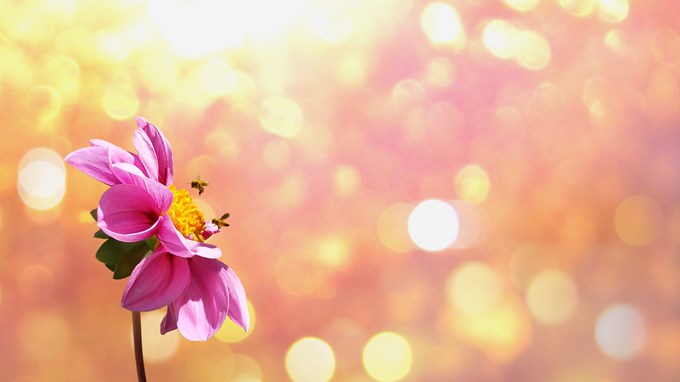
A single bee can visit up to 5000 flowers in one day. But without suitable food sources, bees can starve or become weak and less able to resist diseases and pests.
Fun fact: The buzz that you hear when a bee approaches is the sound of its four wings moving at 11,400 strokes per minute.
Everyone can help out by ensuring their garden, patio or even balcony has food available for passing bees and other essential pollinators.
Gardening in Auckland can be both rewarding and challenging – and no one knows this better than the gardeners at the Auckland Botanic Gardens.
Ask the experts
Bec Stanley, an Auckland Botanic Gardens curator, says bees – both native and exotic – as well as flies, moths and butterflies, are vital in New Zealand for the pollination of native plants and crops.
“Plus, when you talk pollination, you also have other cool things that pollinate like bats, birds and lizards,” she says.
Bec says gardeners who want to encourage pollinators should aim to have a wide range of plants that flower at different times of the year.
And there's great news for people who hate mowing the lawn.
“Leave the grass long and call it a meadow; the pollinators will thank you,” says Bec.
Bec says insect pollinators particularly love native shrubs such as hebes and manuka and exotic garden plants such as salvias, penstemons, lavender and rosemary.
On the feathered front, tauhou (silvereyes) are feeding on the aloes at the moment and the tūī can’t get enough of the kōwhai, camellias and cherry blossoms.
Create your own pollinator paradise
Auckland Botanic Gardens has some tried and tested tips for pollinator-friendly gardening:
- Choose plants that flower at different times of the year to provide nectar and pollen sources throughout the growing season.
- Prune plants so that you get a flush of flowers at a time when not much else is flowering (lavender is very good at responding to clipping with flowering).
- Allow a minimum of three plant species that bloom at any given time during the growing season: spring, summer and autumn.
- Encourage combinations of annuals and perennials.
- Provide a variety of flower colours and shapes.
- Arrange plants in clumps.
- Ensure that your garden has patches of bare soil, piles of wood, hedges and clump-forming grasses to provide a variety of habitats for bugs.
- Make a bug motel.
Bees also need water, so place pebbles or twigs in a saucer of water so they have something to stand on and drink without falling in.
Want more?
Whether you’re a bona fide green thumb or are about to pot your first plant, make sure you follow the Auckland Botanic Gardens Facebook page. It’s full of useful advice and gardening hacks that will help you succeed.
Auckland Botanic Gardens is running a guided walk on “Pollination & Pollinators at your place” on 10 October from 11am to 12pm and 19 October from 1pm to 2pm. The walks focus on native plants and their pollinators, and how to encourage them into your garden to help your fruit trees and veggie patch.
More information on this and other free events can be found on the Auckland Botanic Gardens website.

